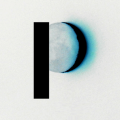Slope Of Enlightened Vision
Could smart glasses as wearables for the masses recover the fall from the peak of inflated expectations and reach a plateau of productive vision?
About two-thirds of American adults wear glasses. It’s predicted that by 2050 nearly 50% of the world population will be nearsighted. Despite ongoing efforts to prevent myopia in various countries, glasses have transformed into an indispensable accessory for many.
A picture is worth a thousand words
Among all the human senses, vision stands out as one of the most pivotal sense organs due to its capacity to supply an extensive stream of information that plays a vital role in making intelligent daily choices. The wearable industry has certainly taken notice of this trend, and smart glasses have emerged as a significant and growing segment. New launches by major brands for smart glasses like Amazon echo frames , Ray-Ban stories etc. indicates its increasing popularity.
Looking back a decade, smart glasses held lofty expectations, particularly with pioneering products like Google Glass that dazzled audiences with their Augmented Reality (AR) capabilities. However, users soon discovered its limitations for everyday practicality.
- Aesthetics — ridiculous looks, not suited for everyday public use.
- Privacy — The constant presence of a…

